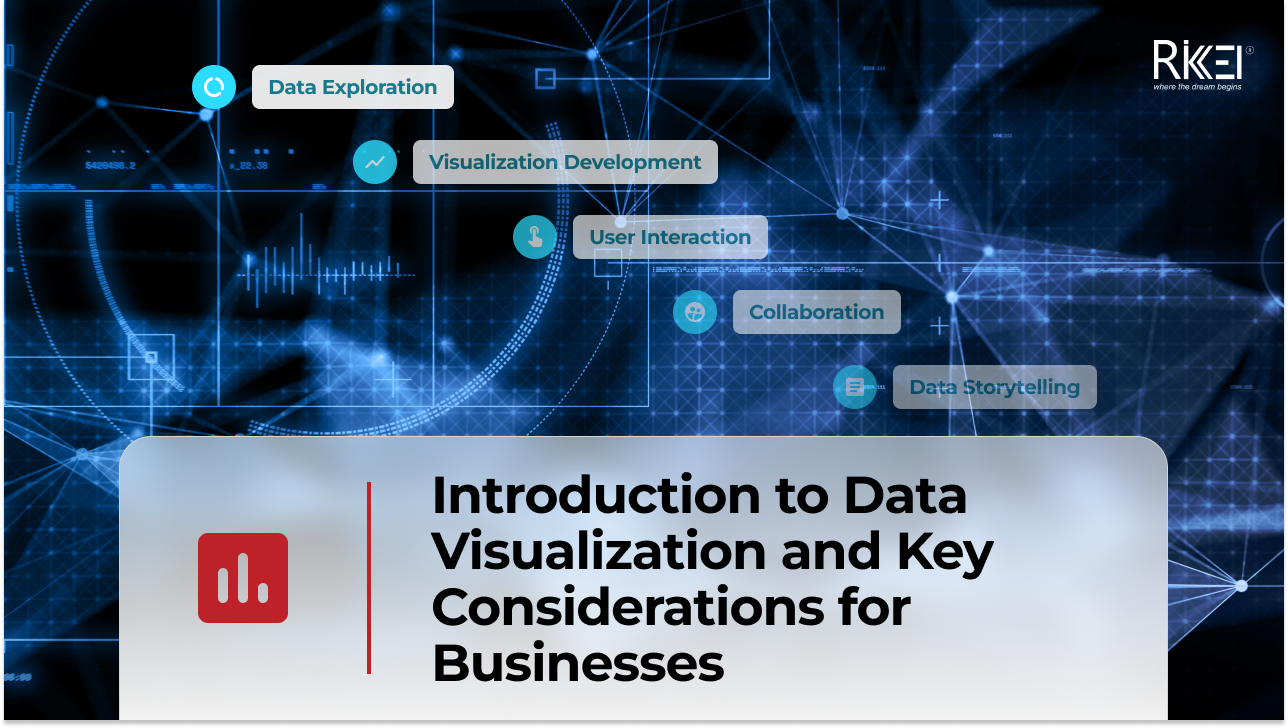What Are Data Warehouse Solutions? Are They Necessary in Today’s Businesses?
Contents
Data warehouse solutions are specialized systems designed to efficiently store, retrieve, and analyze large volumes of structured and sometimes unstructured data. The primary goal of a data warehouse is to support business intelligence (BI) activities, such as reporting, querying, and data analysis, by providing a centralized and optimized repository of data.
Understanding Data Warehouse Solutions
Define data warehouse solutions
Several data storage solutions are available to meet the diverse needs of individuals, businesses, and organizations. The choice of a particular storage solution depends on factors such as the scale of storage required, data characteristics, accessibility, and specific use cases. Here are some common data storage solutions:
Online Storage
Characteristics:
- Data is stored online and can be accessed from anywhere with an internet connection.
- Often used for personal or collaborative file storage and sharing.
Examples: Google Drive, Dropbox, Microsoft OneDrive.
Cloud Storage
Characteristics:
- Data is stored on cloud servers, reducing the need for managing infrastructure.
- Provided as a service, allowing for easy scalability.
Examples: Amazon S3, Microsoft Azure Blob Storage, Google Cloud Storage.
Network Attached Storage (NAS)
Characteristics:
- Data is stored on devices directly connected to a network.
- Commonly used for internal file storage and sharing within a local network.
Examples: Synology, QNAP.
Direct Attached Storage (DAS)
Characteristics:
- Data is stored on devices directly connected to a computer or server.
- Suitable for high-capacity and high-performance storage needs.
Examples: External hard drives, RAID arrays.
These are just a few examples, and the landscape of data storage solutions is continually evolving. Depending on specific requirements, organizations often use a combination of these solutions to create a comprehensive and flexible storage infrastructure.
Explain their role in data management
Data warehouse solutions play a crucial role in data management by serving as a centralized and optimized repository for storing, managing, and analyzing large volumes of data from various sources within an organization. Several key aspects of effective data management:
- Data Integration: Data warehouses integrate information from disparate sources, including operational databases, spreadsheets, external feeds, and other data repositories. This integration ensures that data from different parts of the organization is consolidated into a unified and standardized format.
- Data Transformation: Through the process of Extract, Transform, Load (ETL), data warehouses transform raw and heterogeneous data into a consistent and structured format. This transformation involves cleaning, enriching, and organizing data to make it suitable for analysis.
- Data Storage and Centralization: Data warehouses provide a centralized and optimized storage solution for historical and current data. By centralizing data, organizations can avoid data silos and ensure that relevant information is readily accessible for analysis and reporting.
- Query and Reporting Optimization: One of the primary functions of a data warehouse is to optimize query performance. Through techniques such as indexing, partitioning, and pre-aggregation, data warehouses enable fast and efficient querying of large datasets. This optimization is crucial for supporting business intelligence and reporting activities.
Highlight their significance in data-driven decision-making
Data warehouse solutions are highly significant in the context of data-driven decision-making. Their role extends across several key areas that contribute to making informed and strategic decisions within an organization:
- Data warehouses serve as a centralized repository for a wide range of data from various sources. This consolidation ensures that decision-makers have access to a comprehensive and unified view of the organization’s information.
- By integrating data from disparate sources, data warehouses provide a holistic view of business operations. Decision-makers can analyze data from different departments or systems cohesively, leading to a more comprehensive understanding of the business landscape.
- Data warehouses are optimized for query performance, allowing decision-makers to quickly retrieve and analyze large datasets. Fast and efficient querying is essential for timely decision-making, especially in dynamic business environments.
- Data warehouses provide a foundation for BI tools and applications. Decision-makers can use these tools to create dashboards, reports, and visualizations, gaining insights into key metrics and trends that inform strategic decisions.
- Decision-makers often need the flexibility to perform ad-hoc analyses based on specific questions or scenarios. Data warehouses enable this by providing a structured and organized environment for querying and exploring data on demand.
In summary, data warehouse solutions are instrumental in supporting data-driven decision-making by providing a structured, integrated, and optimized environment for data storage and analysis. They empower decision-makers with timely access to reliable information, historical insights, and analytical tools, enabling them to make well-informed choices that contribute to the overall success of the organization.
Benefits of Data Warehouse Solutions
List the advantages of implementing data warehouse solutions
Implementing data warehouse solutions can offer several advantages for organizations looking to harness their data for better decision-making and business intelligence. Here are some key advantages:
- Data warehouses provide a centralized and unified storage platform for all relevant data, eliminating data silos and ensuring a single source of truth for reporting and analysis.
- Through data cleansing and transformation processes, data warehouses enhance the quality and consistency of data, reducing errors and inaccuracies.
- Faster access to relevant and organized data allows for quicker decision-making, especially in dynamic business environments where timely insights are crucial.
- Decision-makers can perform ad-hoc analyses and generate reports based on specific business questions, allowing for flexibility in exploring data as needed.
- Organizations with a well-implemented data warehouse can gain a competitive advantage by leveraging data to make strategic decisions, identify market trends, and respond to changes more effectively than competitors.
- While the initial implementation may require an investment, data warehouses can lead to cost savings in the long run by streamlining data management processes, reducing the need for manual data reconciliation, and improving overall operational efficiency.
Provide real-world examples of organizations benefiting from data warehousing
Numerous organizations across various industries have successfully implemented data warehousing solutions, realizing significant benefits in terms of improved decision-making, operational efficiency, and strategic insights.
Amazon
Amazon, one of the world’s largest e-commerce and cloud computing companies, utilizes data warehousing to analyze customer behavior, manage inventory, and optimize its supply chain. The company’s data warehousing solution helps in making informed decisions about product recommendations, pricing strategies, and logistics.
Walmart
Walmart, a retail giant, uses data warehousing to manage and analyze massive volumes of transactional data. Their data warehouse enables them to optimize inventory levels, improve supply chain efficiency, and enhance the customer shopping experience through data-driven insights.
Netflix
Netflix, a leading streaming service, relies on data warehousing for analyzing user preferences, content consumption patterns, and viewer engagement. This data-driven approach helps Netflix in personalizing content recommendations and making strategic decisions about content creation and licensing.
LinkedIn, a professional networking platform, uses data warehousing to analyze user engagement, track trends in job searches, and improve the relevance of job recommendations. The data warehouse helps LinkedIn deliver personalized content and features to its users.
Challenges and Considerations
Address potential challenges in implementing data warehouse solutions
While data warehouse solutions offer significant benefits, their implementation can also pose challenges. Addressing these challenges is crucial for ensuring the success and effectiveness of a data warehousing initiative.
Data Quality Issues
Challenge: Poor data quality can lead to inaccurate insights and decisions. Incomplete or inconsistent data from source systems may require extensive cleansing and transformation.
Solution: Implement robust data quality processes during the ETL (Extract, Transform, Load) phase. Regularly monitor and cleanse data to maintain its accuracy and integrity.
Data Integration Complexity
Challenge: Integrating data from diverse sources with different formats and structures can be complex and time-consuming.
Solution: Develop a well-defined data integration strategy. Use standardized data formats, leverage ETL tools, and establish clear data mapping and transformation rules.
Scalability Challenges
Challenge: As data volumes grow, traditional on-premises data warehouses may face scalability limitations.
Solution: Consider cloud-based data warehousing solutions that offer scalability and flexibility. Cloud platforms can dynamically scale resources based on demand.
High Implementation Costs
Challenge: Implementing a data warehouse can involve significant upfront costs for hardware, software, and skilled personnel.
Solution: Conduct a cost-benefit analysis and consider cloud-based solutions, which often have a pay-as-you-go model. Focus on a phased implementation to manage costs.
Discuss scalability, cost, and data security considerations
Balancing scalability, cost-effectiveness, and data security is essential for a successful data warehouse implementation. Organizations should continually assess and adjust their strategies to adapt to changing requirements and technology landscapes.
1. Scalability
- Evaluate the capacity of the data warehouse to handle growing volumes of data over time.
- Consider the ability of the system to accommodate an increasing number of concurrent users and queries.
- Assess whether the architecture supports horizontal scaling (adding more hardware or nodes) or vertical scaling (upgrading existing hardware).
2. Cost
- Evaluate the initial investment in hardware, software licenses, and implementation.
- Consider ongoing costs related to maintenance, monitoring, and support.
- Assess how costs will scale as the organization’s data and user requirements grow.
3. Data Security
- Implement robust access controls to ensure that users have appropriate permissions based on their roles.
- Use encryption for data at rest and data in transit to safeguard against unauthorized access.
- Adhere to industry-specific regulations and compliance standards governing data security and privacy.
Is Data Warehousing Necessary Today?
Present arguments for the necessity of data warehouse solutions in modern society
Data warehouse solutions play a crucial role in modern society, offering numerous benefits that are essential for organizations to thrive in today’s data-driven environment. Here are several compelling arguments for the necessity of data warehouse solutions:
- In a world where data is generated from various systems and platforms, having a unified view allows organizations to make more informed decisions by considering all relevant data.
- In sectors such as finance, healthcare, and others, compliance with regulations is critical. Data warehouses help organizations meet these regulatory standards and avoid legal and financial consequences.
- Collaboration across departments is vital for a well-functioning organization. Data warehouses break down data silos, fostering collaboration and a shared understanding of organizational data.
- Data warehouses are designed to scale, accommodating the increasing volumes of data generated by organizations.
- As organizations grow, the volume of data they generate also increases. Scalable data warehouses ensure that organizations can handle expanding data requirements without compromising performance.
- Strategic decisions are often based on a deep understanding of data. Data warehouses support strategic planning by providing the necessary information for executives to make informed choices.
Discuss the role of data in today’s digital world
In today’s digital world, data plays a central and transformative role across various sectors, industries, and aspects of daily life. The growing volume and availability of data, coupled with advancements in technology, have led to a paradigm shift in how organizations operate, individuals interact, and societies function.
As the digital world continues to evolve, the role of data is expected to expand further with the advent of technologies like 5G, edge computing, quantum computing, and continued advancements in artificial intelligence. Ensuring responsible and ethical use of data, addressing privacy concerns, and promoting data security will be ongoing challenges in this data-centric era.
More From Blog

April 4, 2024
Big Data Performance: Maximize Your Business Value
In today’s data-driven world, organizations are constantly generating and collecting immense amounts of data to understand their customers more deeply. This data, often referred to as “big data,” holds immense potential for organizations to seek opportunities and overcome challenges. But accessing and analyzing big data isn’t enough to have proper strategies; organizations must pay attention to […]

April 4, 2024
How Real-Time Data Analysis Empowers Your Business
In today’s fast-paced business landscape, the ability to quickly make data-driven decisions has become a key differentiator for success. Real-time data analysis, the process of analyzing data as soon as it’s generated, has emerged as a powerful tool to empower business across industries. By leveraging real-time data analysis, organizations can gain timely and actionable insights, […]

April 4, 2024
Differences Between Data Science and Computer Science
Data Science and Computer Science are distinct fields overlapping in certain areas but have different focuses and objectives. The article below will help you clearly understand the differences and the close connection between the two fields. What is Data Science? Data Science is an interdisciplinary field that combines scientific methods, processes, algorithms, and systems to […]

March 28, 2024
Introduction to Data Visualization and Key Considerations for Businesses
In your opinion, what is data visualization? Your main goal is to communicate your recommendations engagingly and effectively, right? To achieve this, let’s immediately explore a method that can represent information with images. What is Data Visualization? Define data visualization and their roles in organizations First, you need to find the answer to the question: […]

March 21, 2024
How to Build an Effective Big Data Analytics Tool for Your Business
Building an analytics tool for a business brings several significant benefits, especially in today’s business environment where data is becoming larger and more complex. So how to build an effective analysis tool for businesses, follow the article below! Assessing Business Needs Assessing business needs involves understanding the requirements, goals, and challenges of a business or […]

March 14, 2024
What Is Oracle Business Intelligence? Their Role in Today’s Enterprises
Oracle Business Intelligence (BI) refers to a suite of tools, technologies, and applications designed to help organizations collect, analyze and present business data. The primary goal of Oracle BI is to provide actionable insights to support decision-making within an organization. Oracle BI encompasses a range of products that enable users to gather, process and visualize […]

